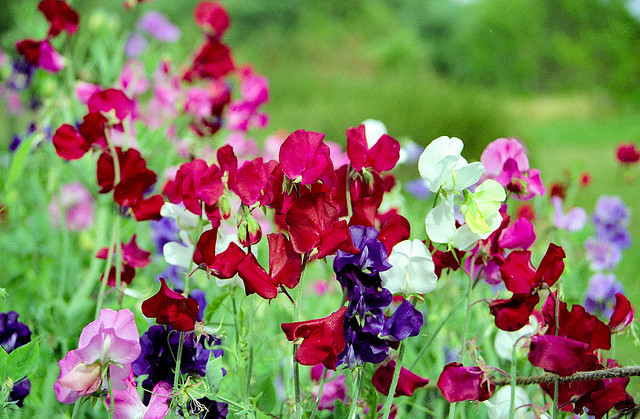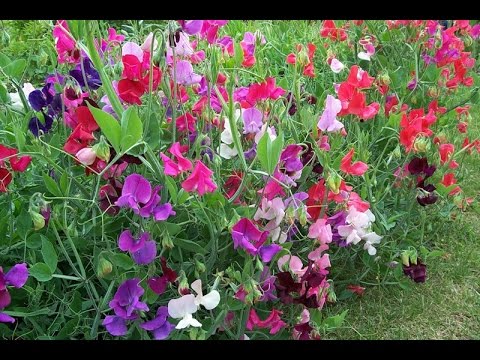One year old sweet pea is a “frequent guest” of flowerbeds and house adjoining territories, it can delight the eyes with a riot of colors for a long time, the main thing is to know: how to plant and further care, what pea diseases can transfer, how to transplant seedlings so as not to damage and what methods of propagation can be used when working with this plant.
Content
Plant description
Sweet peas are popularly called fragrant. This plant came from the legume family, it is the owner of thin and long stems, up to 3 meters in height. The homeland of annual sweet peas are considered the southwestern regions of Italy. Cultivation of the species occurred back in 1699.
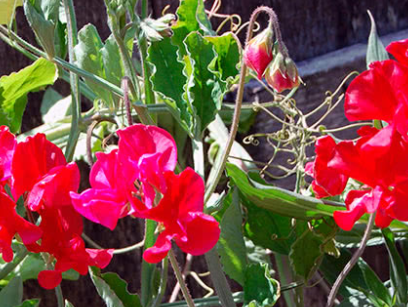
The root system is strong, the cultivation of an annual sweet pea will not be absolutely no difficulties, for this gardeners appreciate it. Flowering continues from early June until the first serious frosts appear.
Classification by type
All varieties of annual sweet peas are divided into certain groups, each of which has a peculiar appearance, certain conditions for planting and caring for the plant.
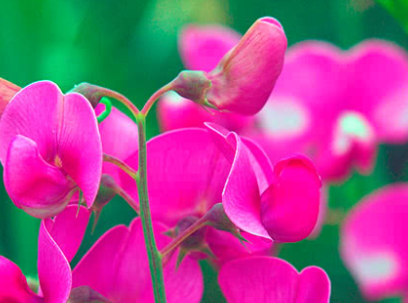 Subdivision into groups:
Subdivision into groups:
- Spencer. This variety has a large number of branches and stems, their growth can reach 1.5-2 meters, it is distinguished by large inflorescences of 5-6 pieces with edges in the form of frills. The period from planting seeds of annual sweet pea to the appearance of the first flowers takes up to 3 months.
- Spencer - Early. Inflorescences are medium in size, their height is 1.2-1.5 meters. After planting seeds before flowering begins 1.5-2 months. They are distinguished by smooth petals.
- Cartbertson - floribunda. This culture was developed completely in the image and likeness of the Spencer species, the only difference is that they bloom earlier and are more resistant to the scorching summer sun. Each inflorescence has 5-7 flowers.
- Galaxy. In height, such varieties reach 2 meters, their inflorescences are large and collected in the form of a brush.
- Multiflora - Gigantea. Sweet peas with two stems, huge flowers, its height reaches 1.5 meters.
- Kni hee. A low-growing variety of peas with a large number of thin stems and with a height of not more than 1 meter, have a bright inflorescence, consisting of 5-6 flowers.
- Bijou. This species has even smaller sizes compared to the previous one; 0.5-0.7 meters grow in the height of such peas. Inflorescences are small, consist of 4-5 flowers.
- Cupid. The miniature shape of the annual sweet pea, the cultivation of which is made from seeds, they are ideal for planting on a balcony, loggia or window.
- Mamut. Such varieties possess powerful stems up to 2 meters high, large inflorescences and a fast flowering period of 1-1.5 months.
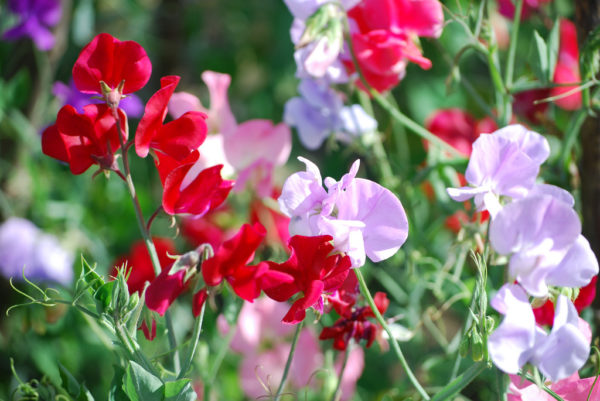
All varieties of sweet peas are in their own way good, so to speak, “for everybody.”
Advantages of Sweet Peas Compared to Other Colors
Curly annual decorative peas has a number of advantages, thanks to which summer residents and happy owners of flower beds love it so much, having planted it in their flowerbed, it will delight with a riot of color, as in the photo.
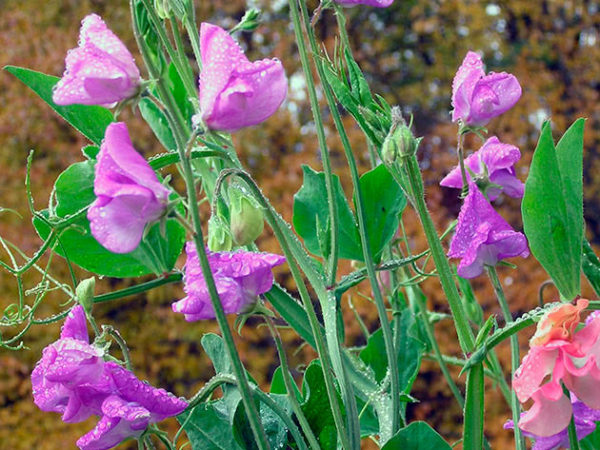
Benefits:
- peas are an ideal option for landscaping, using it you can decorate not only a flower bed, but also the walls of a house, a barn, a gazebo and a fence;
- the plant is not afraid of frost, “calmly” tolerates a temperature of 5 degrees below zero;
- Compared with other varieties of vines, sweet pea blooms very quickly;
- a large number of curly stems, creates islands of shadow;
- long flowering period (at least 3 months);
- growing annual sweet pea from seeds can be carried out in open ground, or in wooden boxes and pots;
- after cutting, a long period retains freshness.
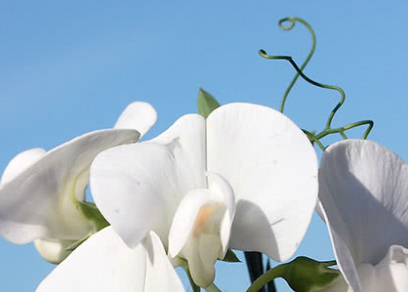
One-year-old sweet pea is an unpretentious plant in planting and care, in order for it to bloom, it is enough to just plant it without applying any special effort.
Landing and care tips
Growing an annual sweet pea from seeds is a natural way of propagation. Landing Method 2:
- transplanting;
- planting seeds in open ground.
Of these, the second is preferred, since when growing seedlings, problems can arise, and when transplanting into open ground, the root system and thin stems can be damaged.
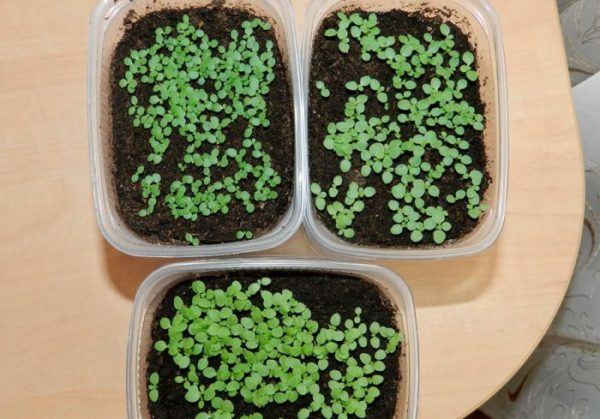
One-year sweet pea (photo) does not require special conditions for planting and care. All procedures are standard. A place for peas should be prepared in advance. Dig up the earth, make compost, fertilizers from phosphorus and potassium to a depth of 15 cm.
Seeds should be soaked in boiling water and left to swell for a day. Floated seeds must be discarded; they are not suitable for planting. Put the rest on a cloth soaked in water and wait until they germinate. Seedlings need to be hardened, periodically removing to a cool place for 15-20 minutes.
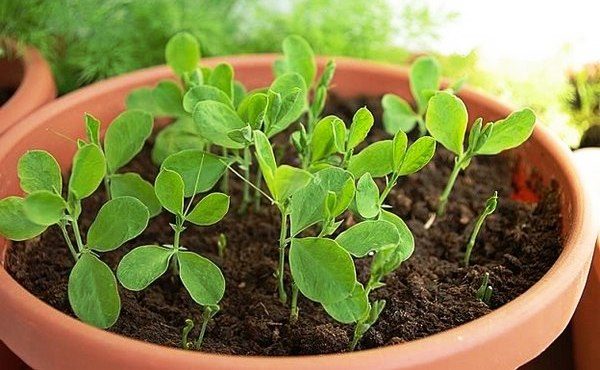
Planting seeds and seedlings should be carried out in a cool shady place, so that direct sunlight does not fall on the plant.
There is an opinion that planting an annual sweet pea and subsequent care for it is quite problematic. But if you observe a number of necessary conditions, the process will be much more prosaic:
- seeds need to be planted immediately in open ground, skipping the period of growing seedlings;
- the seeds of the plant have a very dense shell, so gardeners use some tricks in order to sprout them: seeds are soaked, rubbed with sandpaper, cut the shell;
- adult plants tend to break, they need to be planted along the fence, or to establish vertical supports and tie long stems to them;
- The root system of the plant is powerful and goes deep into the ground, so it needs abundant and regular watering.
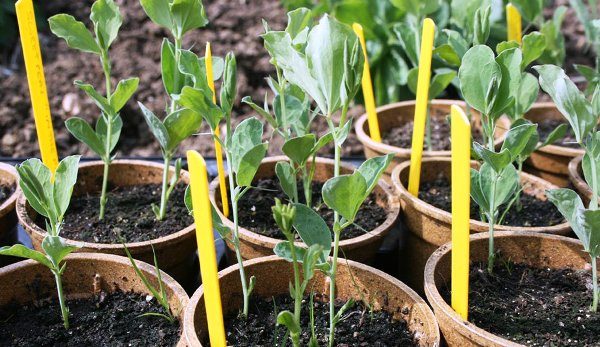
The question of when to start planting sweet peas (annual) cannot be answered unambiguously. Before embarking on transplanting seedlings, you should study the conditions in more detail. growing a selected variety of peas, find out how it tolerates cold, the recommended temperature for germinating seeds, determine the planting location and prepare it. Do not pull with planting seeds, sweet peas germinate for a long time. And before the inflorescences bloom, at least 2-3 months must pass.
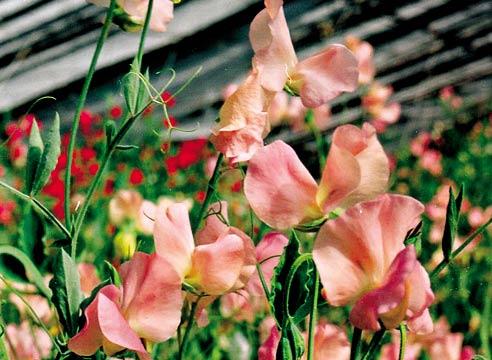
Sowing of seeds is carried out in April, placing them in peat pots or in May immediately in open ground.
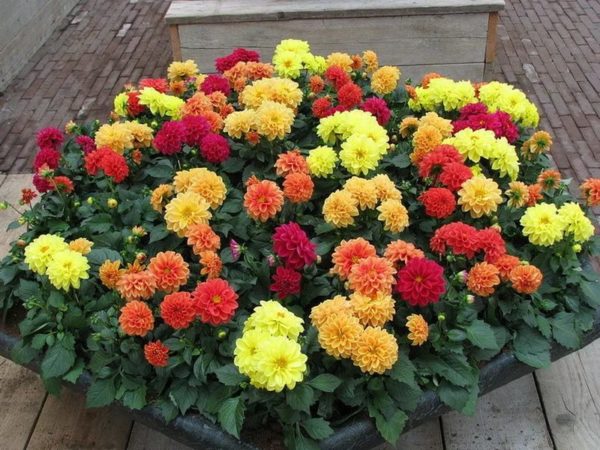 You may be interested in:
You may be interested in:Top dressing
Sweet peas are fed three times per season:
- It is produced when the stems grow. Nitrofosku and urea in equal amounts (1 tbsp. L.) Are diluted in 10 liters of warm water.
- It is carried out, starting with the appearance of the first flowers. In a bucket of 10 liters, a tablespoon of potassium sulfate and fertilizer "Agricola - 7" are bred.
- It is carried out during the flowering period. To do this, a tablespoon of Ross and Agricocolon for flowering plants dissolves in 10 liters of water. The mixture is consumed in an amount of 3-4 liters / 1m2.
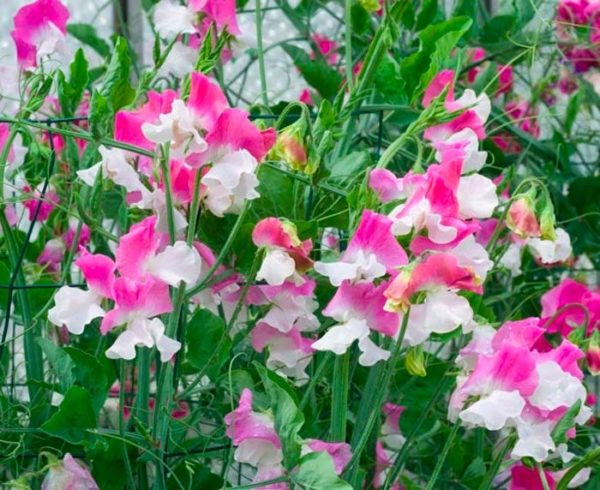
The plant is watered no more than 1 time per week, but there should be a lot of water, 30 liters / m2. The most important thing is to know the “golden mean”, not to overfill and not to dry the peas, he loves abundant watering, but does not tolerate waterlogging of the soil. During the season, it is recommended at least 3-4 times to loosen and weed the weeds around the plant.
 You may be interested in:
You may be interested in:Diseases, pests and methods of dealing with them
Pea stubbornly tolerates all diseases, the most common diseases:
- blackleg;
- downy or powdery mildew;
- brown spots.
Some weevils and aphids can harm plants.
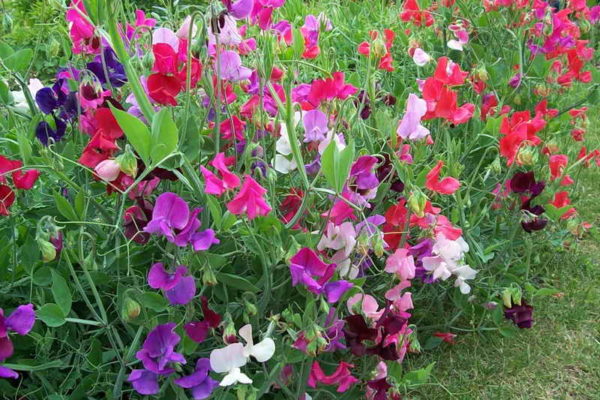
Ways to help get rid of diseases:
- To get rid of powdery mildew and false mildew will help the spraying with the drug "Topaz" (1 ampoule of the drug is diluted in 10 liters of water). Processing can be carried out before and during flowering. Up to 1 liter of mixture is consumed per 8 m2.
- “Khom” preparation will help get rid of “color diseases” - a black leg and brown spotting, at the rate of 40 g per 10 liters of water.
- in the fight against insects - pests will help the popular tablet "Spark", one tablet per 10 liters of water will be enough. The prototype is Fitoverm, 2 ml of the drug is diluted with 1 liter of water. A liter of solution can treat an area of 10 m.
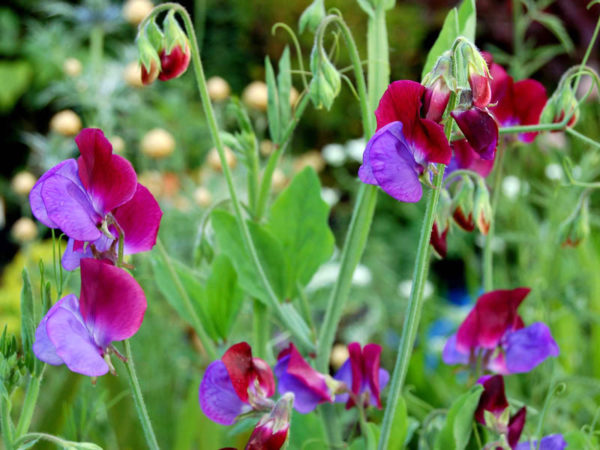
Do not worry too much, diseases in this type of plant are extremely rare. They adapt perfectly to the environment.
Popular varieties
Sweet pea is divided into classes: tall, medium and stunted. Consider which varieties belong to each class.
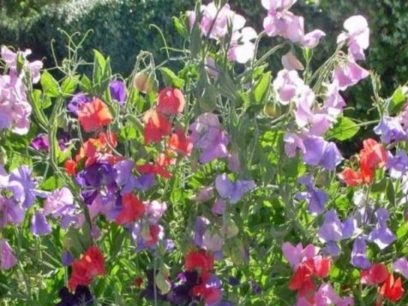
Tall:
- Spencer “Aristocrat” with a sugary sweet aroma and white-pink flowers, “Sir Charles” with flowers of scarlet shades, “Sir Arthur” with delicate lilac petals, “Formula of love”, full of various colors.
- Galaxy Milky Way, Alice, Cremona, Neptune. All of them are distinguished by large inflorescences with corrugated flowers up to 5 cm in diameter.
Medium-sized varieties include: “Lummer”, “Continent” “Jet Set”, “On the 850th anniversary of Moscow”.
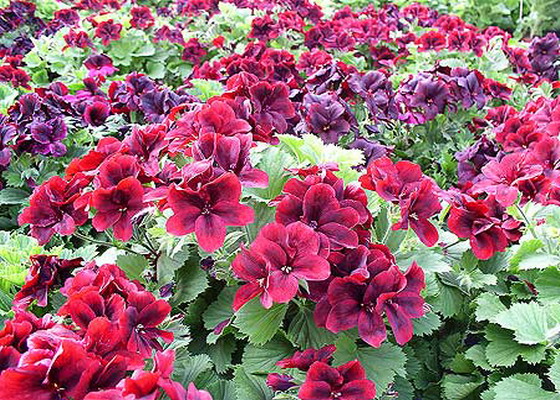 You may be interested in:
You may be interested in: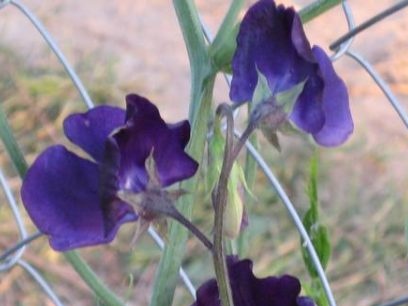
The undersized group includes varieties: “Mammut”, “Cupid”, “Billot”, “Fantasy” (dwarf pot). From this group colorful rugs are formed.
Cut pea flowers better at dawn, while the air blows cool. After cutting, the flower buds do not open, so you should wait until all the inflorescences have gained color. A bunch of sweet peas can stand up to 2 weeks. The plant is perfect for decorating arbors, hedges, decorating the walls of buildings.

